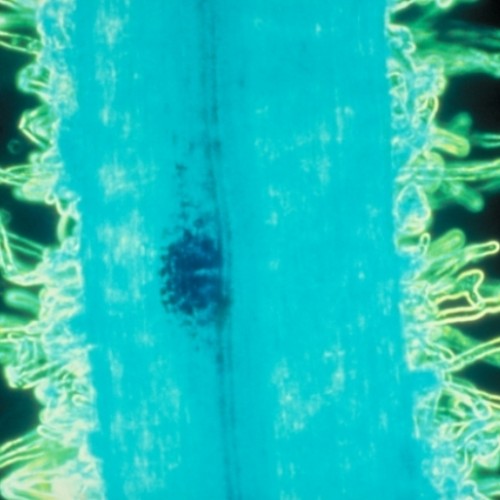On planet Earth, bacteria-legume symbiosis produces as much ammonia as the entire fertilizer industry. In the 2000s, INRA researchers characterised the key factors of this nitrogen-fixing symbiosis. Ten years later, they isolated their equivalents for plant-fungi symbiosis.
Although plants can synthesize carbon compounds using carbon dioxide in the atmosphere in a process called photosynthesis, they are not able to fix nitrogen from the air. No nitrogen means no synthesis of protein, and therefore no possibility of life! Some plants, from the leguminous family, have found a solution to this: team up with nitrogen-fixing bacteria (essentially of the rhizobium type). On planet Earth, rhizobium-legume symbiosis produces as much ammonia as the entire fertilizer industry (2009 figures).
In the 2000s, Jean Dénarié and his team characterised the Nod factors that participate in a molecular dialogue between plants and bacteria, triggering symbiosis: the plant emits flavonoids, which attract the bacteria that in turn emit Nod factors that lead to the formation of nodules in the roots of the plant, where the bacteria can then settle in.
Scientists have been able to select the most competitive rhizobium strains for nodulation, and enrich inocula with purified Nod factor solutions. Millions of hectares around the world are thus inoculated each year with rhizobium bacteria.

Mycorrhizae are a form of plant-fungi symbiosis. Fungi endow the plant with mineral elements retrieved from the soil (phosphate, calcium, potassium, magnesium, copper, zinc, etc.), while the plant gives the fungi metabolites derived from photosynthesis. Mycorrhizae concern 95% of plants.
Ten years after characterising Nod factors, Jean Dénarié and his colleagues characterised the Myc factors that play a role in the molecular dialogue between plants and fungi. Myc factors belong to the same chemical family as Nod factors, which are key to symbiosis between leguminous plants and bacteria. They are also lipo-chitooligosaccharides (LCOs), which confirms the evolutionary proximity of these two types of symbiosis that are nevertheless very different.
Fungal inocula have been used in tree nurseries for the past 20 years on Douglas firs. Another example is the inoculation of truffle trees, which owes a lot to INRA research.
- Nod factors:
Lerouge P, Roche P, Faucher C, Maillet F, Truchet G, Promé JC et Dénarié J. 1990. Symbiotic host-specificity of Rhizobium meliloti is determined by a sulphated and acylated glucosamine oligosaccharide signal. Nature, 344: 781-784.
- Myc factors:
Maillet F, Poinsot V, André O, Puech-Pagès V, Haouy A, Gueunier M, Cromer L, Giraudet D, Formey D, Niebel A, Martinez E-A, Driguez H, Bécard G et Dénarié J. 2011. Fungal lipochitooligosaccharides symbiotic signals in arbuscular mycorrhiza. Nature 6 January; DOI: 10.1038/nature09622